|
En más de un par de ocasiones se escucha en las cercanías un breve silbido acompañado de un golpe seco y el estruendo de la explosión causada por el cohete lanzado desde el otro frente, donde están los rusos. Ninguno de los presentes se inmuta ante la vibración de las ventanas y siguen en su tareas como si el enemigo no estuviera a sólo 3 kilómetros de su posición o como si las constantes explosiones de entrada y salida de artillería fuera tan sólo una música de fondo en la cotidianidad de sus vidas.
Fuman en exceso, bromean a carcajadas y alguno sale a hacer una llamada en algún tiempo libre, pero ninguno de ellos despega el ojo a una pantalla en el cuarto que en vivo reproduce un video satelital dentro del territorio enemigo, la razón: Ellos son los encargados de atacar posiciones rusas desde el aire con drones adaptados al combate. Esa pantalla es su campo de batalla y con esas imágenes ellos dan cacería a su objetivo. Un pequeño escudo hecho de fieltro con un cráneo sonriente y dos armas largas flanqueándolo es el símbolo de la brigada Taburetka, una unidad militar conformada por militares de carrera y jóvenes voluntarios ahora convertidos en especialistas en el uso de tecnología militar, así como en la manufactura de misiles artesanales con los que han tenido el éxito suficiente como para ser una amenaza latente para el enemigo. Fabrican de todo. Con termos rusos abandonados han hecho puntas de misiles, las tuercas y tornillos que van encontrando en las calles funcionan para hacerse detonar en las bombas que ellos fabrican con tuberías de plástico e incluso el pequeño avión con el que realizan exploraciones aéreas es constantemente reparado por ellos mismos con materiales caseros. Y funciona a la perfección. Nacidos por la necesidad, este grupo combina las altas tecnologías con la curiosidad y la simpleza de crear mucho con lo menos que se tiene. Su origen, irónicamente se remonta a cuando algunos de sus oficiales formaban parte de la patrulla fronteriza. Los contrabandistas comenzaron a utilizar drones para pasar mercancía por la frontera ucraniana y ellos comenzaron a decomisarlos, pero también a aprender . Hoy, convertidos en una unidad regular del ejército, estos hombres usan las bases del contrabando para vigilar y castigar a los enemigos a la redonda. Kherson es un sitio de vital importancia dentro de la geografía militar y ha sido pieza clave en ésta guerra para ambos bandos. Los rusos la ocuparon más de 6 meses dejando una estela de devastación y un sinnúmero de testimonios de crímenes de guerra que han narrado sus supervivientes. Torturas físicas y psicológicas, ejecuciones a civiles , destrucción de líneas de agua potable son algunas de las acusaciones que se han recogido entre la población que hasta el día de hoy sufre de desabasto de alimentos en algunas zonas y la destrucción de villas, edificios y localidades enteras que han quedado abandonadas y sus pobladores a la deriva. Para esta unidad no existe el descanso. Tienen un sistema de rotación y día y noche se encargan de vigilar la pantalla en casa para detectar objetivos. Por la noche y bajo el fuego constante enemigo se mueven a sus posiciones . En ocasiones vigilan el espacio aéreo, en otras también se dedican a derribar drones enemigos o interceptar fuego de artillería. No es un trabajo fácil, pero su esfuerzo ha valido salvar a sus colegas que se encuentran peleando en tierra y a quienes no les llegan los proyectiles que interceptan. Los drones que manejan también funcionan para mandar alimentos, agua y medicinas a la infantería que pelea codo a codo en las trincheras. Golpear y correr El cielo es un constante ir y venir de proyectiles , aviones no tripulados y drones. Para llegar a los puntos de acción hay que manejar rápido, estar en constante movimiento y evitar estar al descubierto, por lo que es vital realizar las tareas rápidamente antes de que el enemigo pueda ver su ubicación. “ Es una pelea directa entre sus pilotos y nosotros. Para ellos vale mucho matarnos, porque saben que les causamos mucho daño” – Revela un miembro del equipo. Por la mañana partimos a un sitio oculto. Ahí armaron el avión no tripulado y en menos de 3 minutos estaba listo para la acción. Un soldado con sus propias manos lo lanza al cielo y es ahí cuando empieza su despegue a las líneas enemigas, por lo tanto para nosotros es momento de correr. Durante el vuelo nos movemos a otra locación. En una pantalla de celular me muestran todo lo que el dron observa desde una altitud prudente : Trincheras kilométricas, hectáreas enteras repletas de agujeros dejados por los cientos de misiles que han caído en esos campos, vehículos en movimiento y también vehículos destruidos abandonados, árboles talados y lo que parece ser un gran terreno carbonizado es un poco del panorama del otro lado. Posterior a esto, todo el material es analizado por sus oficiales, quienes deciden qué puntos podrían atacarse y cuales no. Después de unos minutos regresamos para recoger el dron y guardarlo. Rápidamente se desarma y de nuevo, a moverse antes de convertirse en un blanco fácil para los rusos. Hoy se tienen más de 25 minutos de video de vigilancia, nadie ha salido herido y el dron no fue interceptado por el enemigo . Ha sido una buena mañana. En otra locación, la lluvia ha complicado la tarea de los muchachos. Hay neblina en el frente enemigo y es difícil saber las posiciones de artillería que confunden el humo de sus misiles con la niebla. Los rusos lo saben y envían misiles de manera más repetitiva obligándonos a permanecer en las sombras y evitando los claros para no ser detectados. El operador ucraniano hace todo lo posible, en su rostro se puede ver la ansiedad de la búsqueda y la frustración de no poder observar al enemigo aunque sabe que lo tiene ahí de frente. El hábil piloto mueve el aparato rápidamente , lo sube, lo baja y analiza la imagen… pero nada. Ni rastro, y para colmo la lluvia se hace más fuerte. Momento de irnos. Aunque hoy las tareas fueron solo de vigilancia, durante la noche me han mostrado algunos videos de sus ataques. El equipo también cuenta con unos pequeños y temibles drones kamikaze con los que causan cuantiosos daños a los rusos. Son ataques pequeños pero mortíferos, éstos aparatos pueden ir a más de 100 kilómetros por hora y su velocidad y ligereza los hace prácticamente indetectables a radares o sistema antiaéreo. Una oscura bodega subterránea es donde guardan sus explosivos en la base. Se enorgullecen de tener objetos rusos que después devuelven en forma de explosivos a sus enemigos. En sus creaciones anotan nombres y mensajes , para ellos esta guerra es sumamente personal. Desde el inicio de la invasión, y para otros desde la anexión a de Crimea, esta guerra les ha quitado a sus familias , a sus amigos y a sus hogares, por eso es que hoy pelean desde la tecnología para atacar al enemigo y proteger a sus colegas del frente. Durante la cena conversamos alegremente sin descuidar por un minuto la pantalla de vigilancia. Entre las risas y el buen rato, un coronel levanta un vaso y se brinda por los ucranianos caídos. Todos guardan silencio y beben respetuosamente. Quizá piensan que mañana, los drones les darán la revancha.
0 Comentarios
It was early. The windows rattled and there was the sound of an explosion, like thousands since the war began, that had hit the vicinity of where I was taking my things to go to work. A friend, Alexander, immediately offered to take me to document with photographs the place where that rocket had fallen, since it had certainly been close judging by the noise and vibration of the windows of the building where we were.
On the way we learned that a missile had hit a bus stop and that there were human victims. Alexander received a call from a contact and informed him of the situation. Upon arrival, we coincided with the firefighters and the bomb squad who were already working on the scene amidst bent iron, glass on the ground and, in what was a bus stop, two bodies of an adult couple were undone in the rubble. . The Russian missile had hit very close to them and unfortunately killed them instantly as they were waiting for a truck, perhaps on their way to work or home, trying to lead a normal life despite the war. You could still smell a kind of aroma of burning oil and smoke as it didn't take long for us to reach the site. There, a few meters from the destroyed bus terminal and almost imperceptible due to the rubble and the work of security personnel, was the body of a child lying on the sidewalk. Slender, with eyes to the sky was the body of Dmytros Kubata. A 13-year-old boy who was walking with his sister on the sidewalk when the missile fell, killing himself on the spot. Within minutes, and the most shocking thing about this whole story, is that his father, Vyacheslav Kubata, arrived on the scene within minutes. With the love that only a father can have for his children, he touched the corpse's face and very tenderly adjusted its eyelids and took its hands. A hand that he did not stop taking at all times except when he had to check some belonging of his son. Minutes passed and the father took out a small book and silently recited a few words: I was praying. While chaos, explosions, death and destruction reigned in the place, a father prayed for the life of his son without letting go of his hand, as if he was clinging to her or trying not to let what was happening. was real. Before this image, a policewoman gave him a hug. The only thing we can offer and that is certainly not enough. That day we witnessed a crime. Children and civilians must not die in war. And parents should not hold hands with their children killed by criminals. A forest of pine and birch trees surrounds the city of Kharkiv and serves as a natural border from the neighboring country that is now invading them. That is where the battle between Ukrainians and Russians is fought and it is also the place where Putin's forces occupied the territory to place their artillery and constantly bombard the population that in the best of cases fled and in others, had to shelter underground for up to three weeks while the army, militiamen and volunteers resisted and defended the territory. The front is still active, however, it has been a couple of months since the Ukrainians repelled the attacks and seized the land that today is full of new and used artillery, abandoned. Rusty tanks, garbage and bullets rusting among the fields of sunflowers that continue to grow despite gunpowder, fire and destruction. On the ground and in the trenches, there are also countless boots that the Ukrainian soldiers show off. They are mostly rubber boots and in other campaign cases. All official and regulation of the Russian army, scattered here and there, some hanging on branches of burned trees and others half buried between puddles and flies. - Why did they abandon the boots? - I ask, thinking that in my logic they are essential to walk. - They were not abandoned. The dead and crippled do not wear boots- an officer answers me, while we continue along the path between fields of sunflowers, burned pines and abandoned boots. Vinnytsia is located in the center of Ukraine, housing about 350,000 inhabitants who, until today, have maintained a relative calm in the context of the Russian invasion of Ukrainian territory. On March 6, its airport was bombed, thus cutting off one of the air arteries of communication in the country and its inhabitants learned to live with the constant threat of a bombing without it taking place... until today.
Long-range missiles were placed in a government office, destroying one hundred percent of its interior, as well as a neighboring apartment complex where 21 casualties have been recorded, all civilians. Until now, firefighters continue to work at the scene, as well as the Ukrainian defense and civil authorities. The border cities with Ukraine became a second battle front, where volunteers and authorities every day attend to thousands of Ukrainian refugees who arrive in Poland trying to flee from the war and the fighting that took place in the city of kyiv and areas of the eastern Ukraine.
The Warsaw train station, strategically located between the border with Ukraine and Belarus, welcomes thousands of families daily with food, coffee and food, who have adopted it as a temporary refuge camp while they find a destination to flee from the battles and incessant bombing to start the occupation. A small nursery has been set up right here so that the children can forget a bit about the misfortune of their journey and spend time with other comrades escaping from the war. In this small center there are some children's games and space to paint, as well as clothes that the Poles have donated for the cause. The little ones are greeted with chocolate, sweets and the friendly smiles of the volunteers who play with them while the parents rest for a while to think about their new destination. It is estimated that more than a million refugees from Ukraine have arrived in Poland since February 24, most of them by train, turning the power plants into refugee camps and the second largest battlefront in this invasion. from Russia to Ukraine |
AuthorHéctor AD Quintanar Archives
Agosto 2023
Categories |
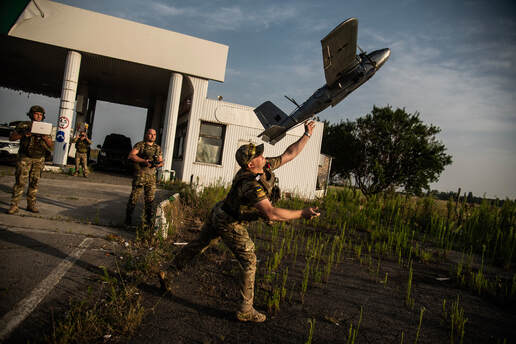


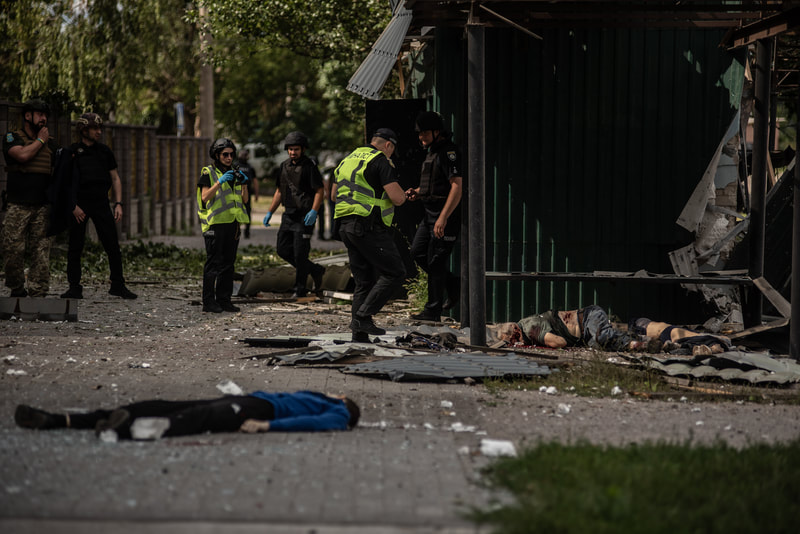

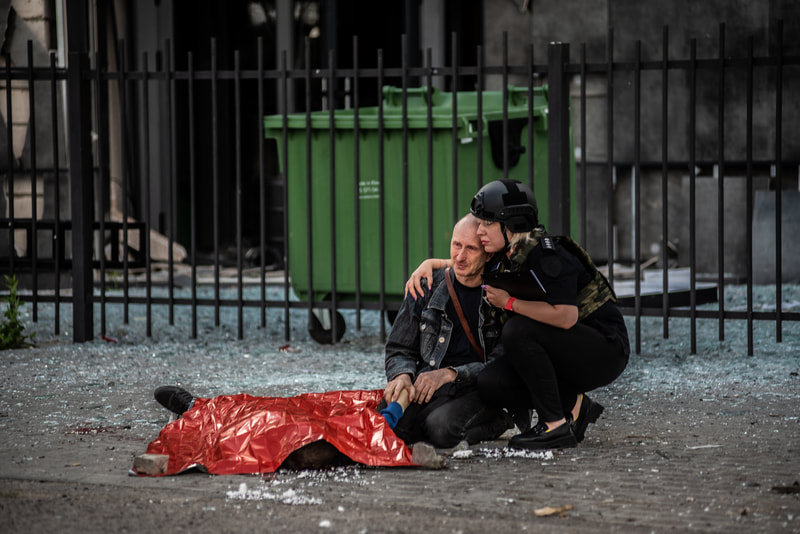



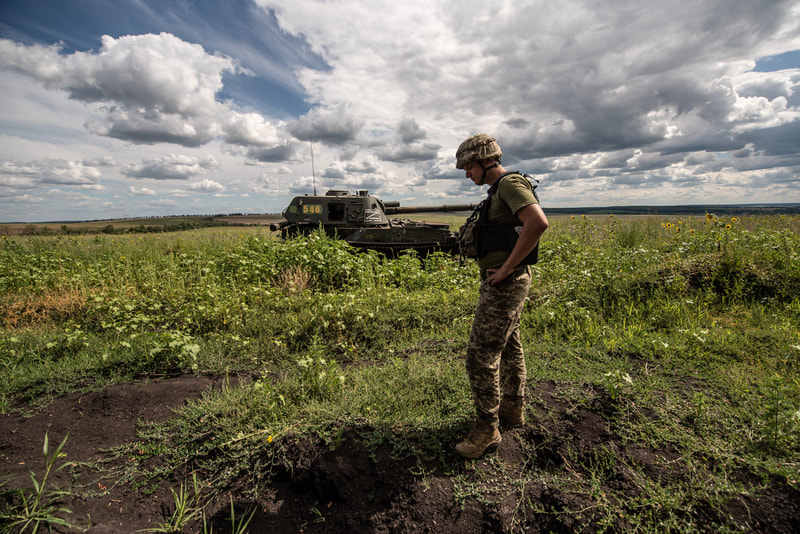








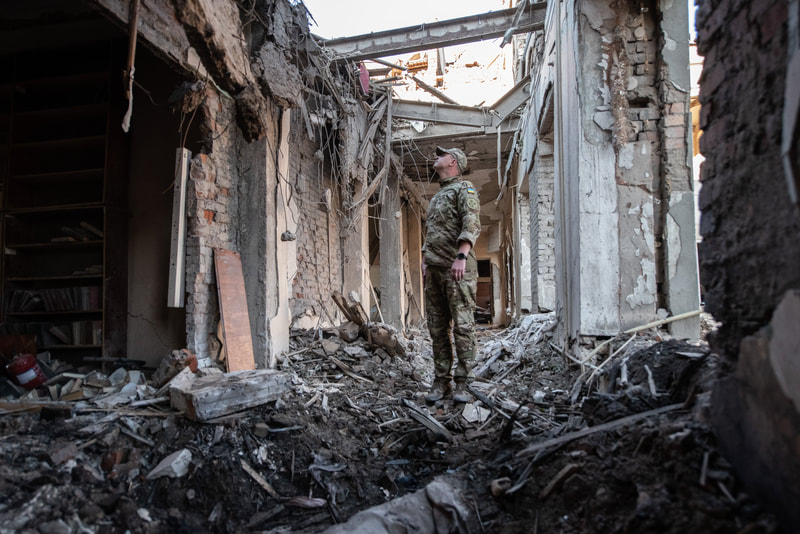





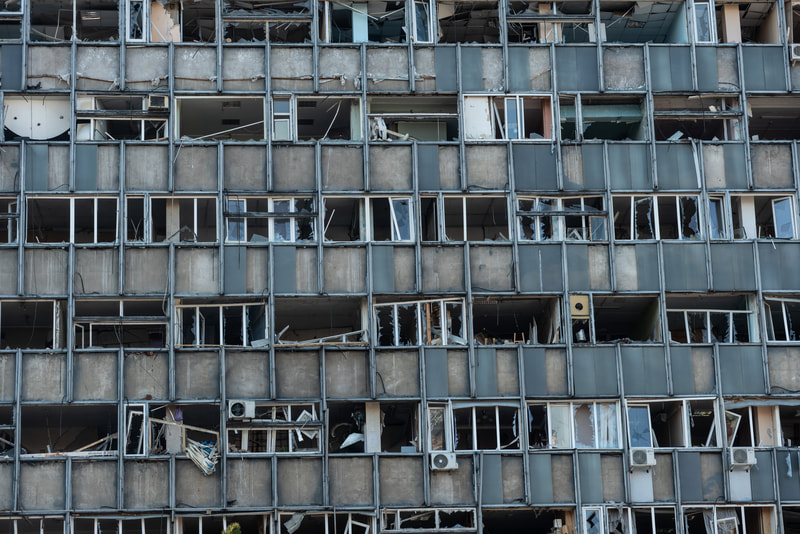
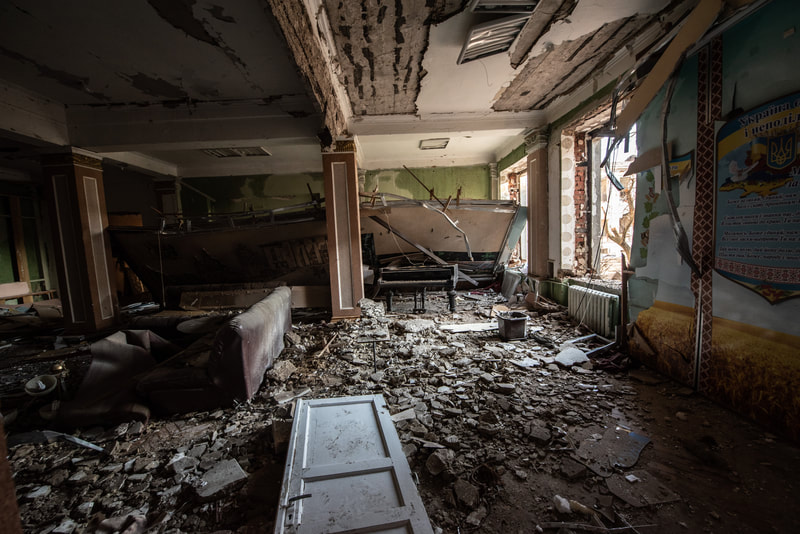






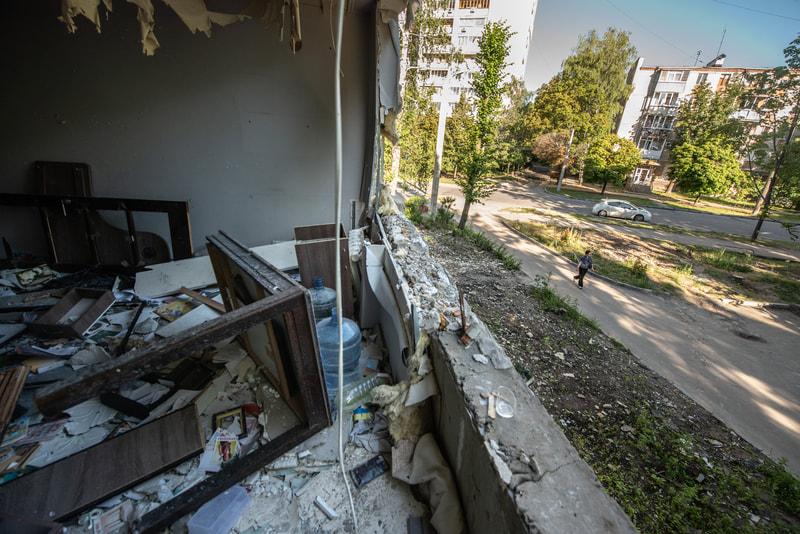




















 Canal RSS
Canal RSS